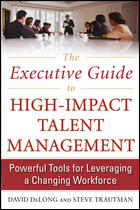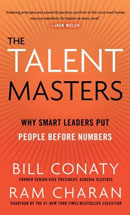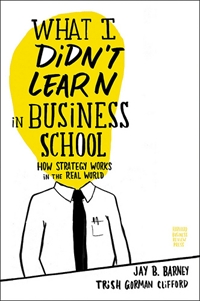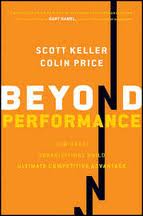Recommended Resource – The Executive Guide to High-Impact Talent Management
The Executive Guide to High-Impact Talent Management: Powerful Tools for Leveraging a Changing Workforce
by David DeLong and Steve Trautman
About the Reference
The Executive Guide to High-Impact Talent Management: Powerful Tools for Leveraging a Changing Workforce by David DeLong and Steve Trautman provides a complete talent management program blueprint covering:
- Diagnosis of talent related organizational risks
- Evaluation and measurement of talent management initiatives
- Acceleration of leadership development
- Transference of individual and organizational knowledge
This blueprint provides the details needed to institute each of these programs and achieve real, measurable results.
Benefits of Using this Reference
StrategyDriven Contributors like The Executive Guide to High-Impact Talent Management because the blueprint provided is implementable, actionable, and based on many of the practices endorsed by StrategyDriven. These practices focus on continuous programmatic assessment and performance measurement to drive superior results. If we had one criticism of the book it would be that the solutions presented appear too academic and unaltered by the realities of the business world.
The Executive Guide to High-Impact Talent Management provides a thorough, implementable talent management program based on sound principles of accountability; making it a StrategyDriven recommended read.





